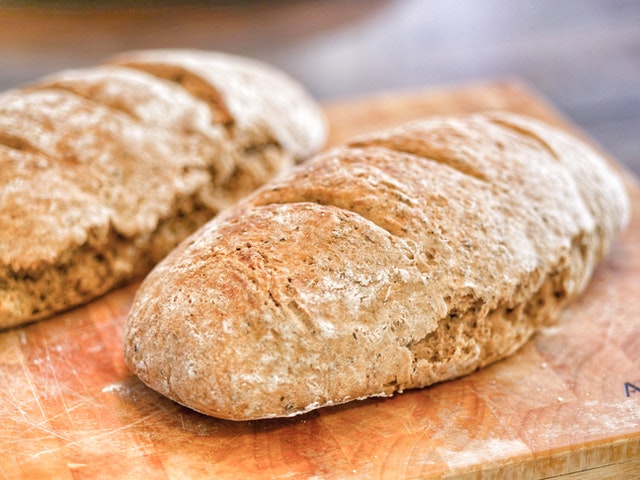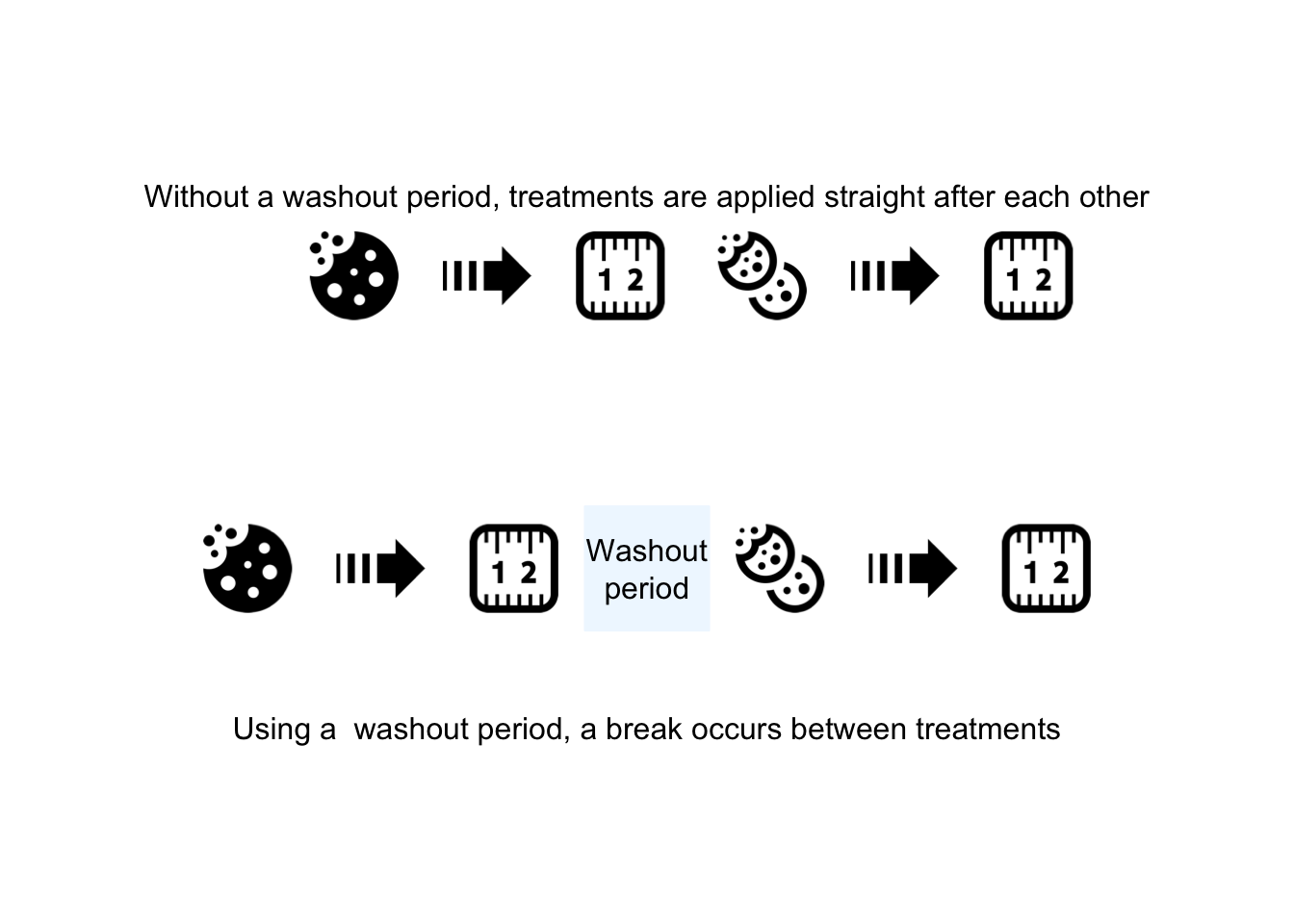7.4 Carry-over effect and washout periods
In the Himalaya study, what if patients spent two weeks on the Himalaya 292 diet, then the next two weeks on the refined cereal diet?
Potentially, the influence of the first diet could still be impacting the subjects’ faecal weight for a little while after stopping the first diet. This could compromise the internally validity of the study.
This is called the carryover effect.
![]()
In the context of experiments, this may means that the influence of one treatment carries over into the influence of the next treatment.
The impact of the carryover effect can be minimized by using a washout period or similar; for example, after finishing one diet, the participant spend four weeks on their usual (before study) diet, and then revert to the second diet being used.
Sometimes, researchers can randomly allocation the order in which the treatments (i.e., the diets) are used. That is, some participants start by spending four weeks on the Himalaya 292 diet, then (after a washout period) four weeks on the refined cereal diet; meanwhile, other participants start by spending four weeks on the refined cereal diet, then (after a washout period) four weeks on the Himalaya 292 diet.

Example 7.8 (Carry-over effect) In the Himalaya 292 study, the authors report:
That is, subjects were randomly allocated to a diet: some subjects began the study on the Himalaya 292 diet while others started on the refined cereal diet, No washout period was used; however, since the response variable was recorded after four weeks on the diets, no washout period was necessary.Subjects were allocated randomly to […] dietary treatments according to a cross-over study design with each intervention phase lasting 4 weeks. There was no washout period between phases.
— Bird et al. (2008), p. 1033
Example 7.9 (Washout periods) An engineering study (Miller and Boyle 2019) examined drivers’ exposure to lane-keeping system on their driving performance. Subjects were exposed to a driving simulation that used a lane-keeping system, and then to a driving simulation without using a lane-keeping system.
The researchers found that there was a carryover effect when drivers moved from a simulation with a lane-keeping system to one without a lane-keeping system.
FIGURE 7.5: Using a ‘washout’ period to minimize the carry-over effect